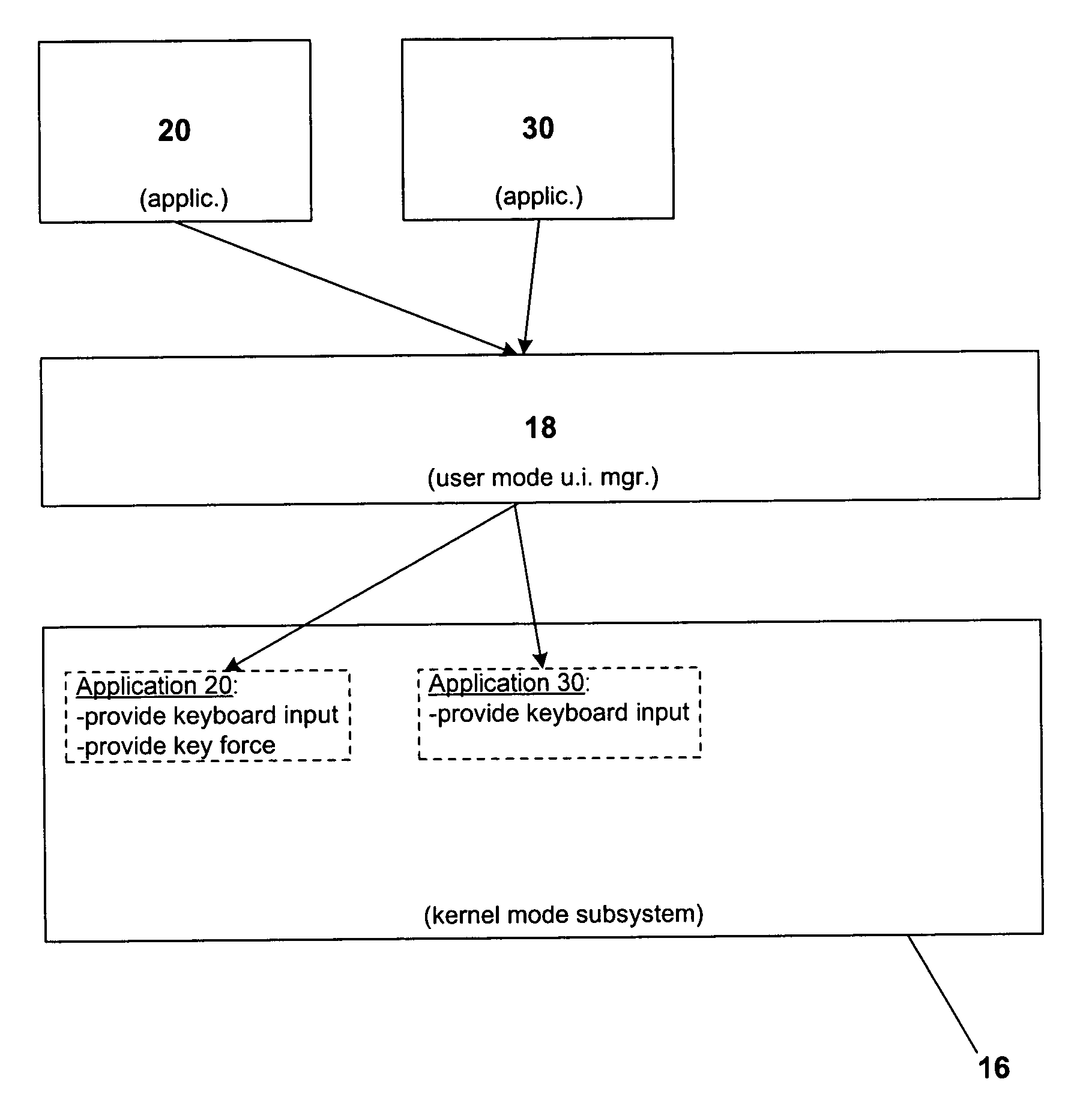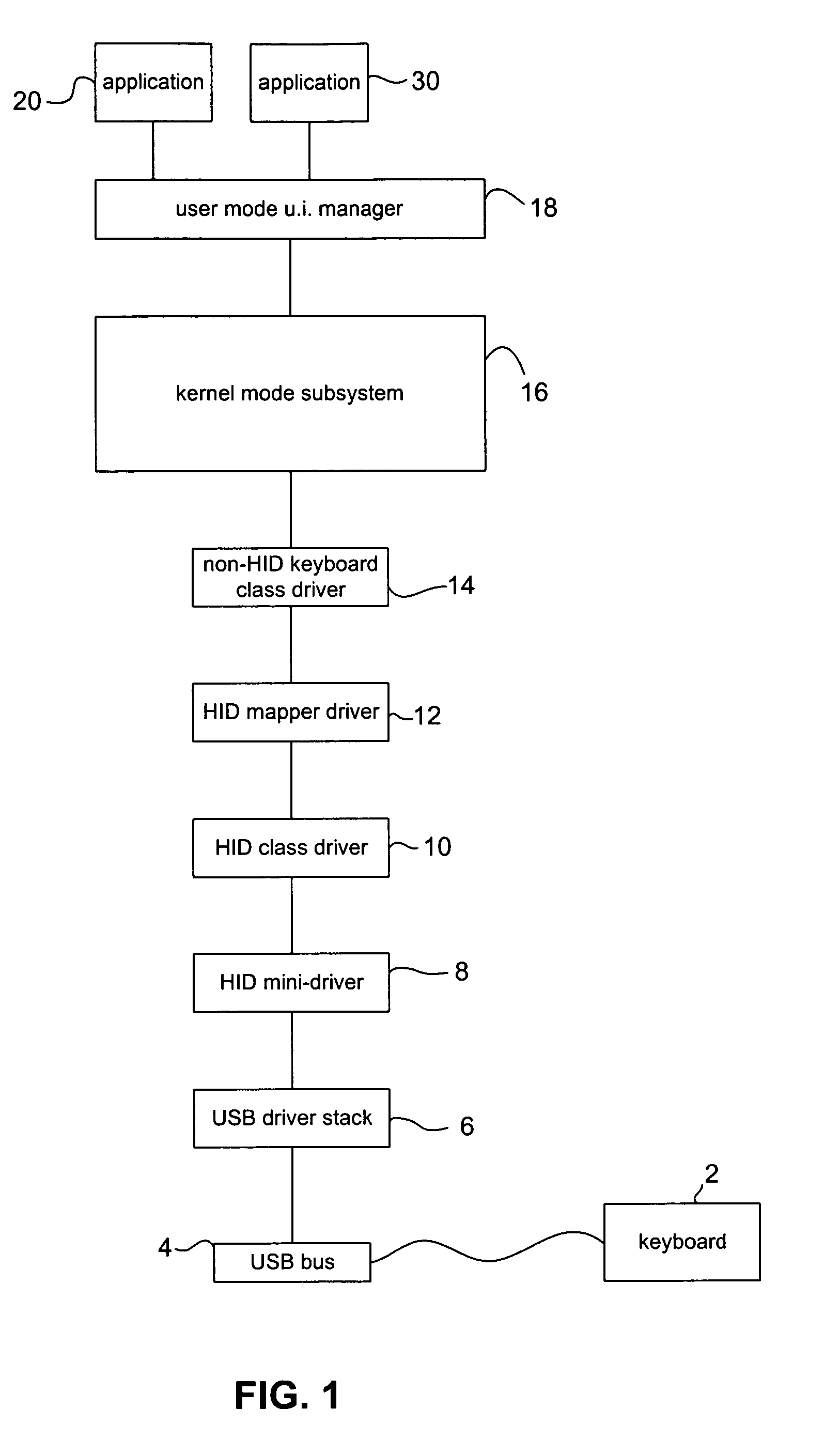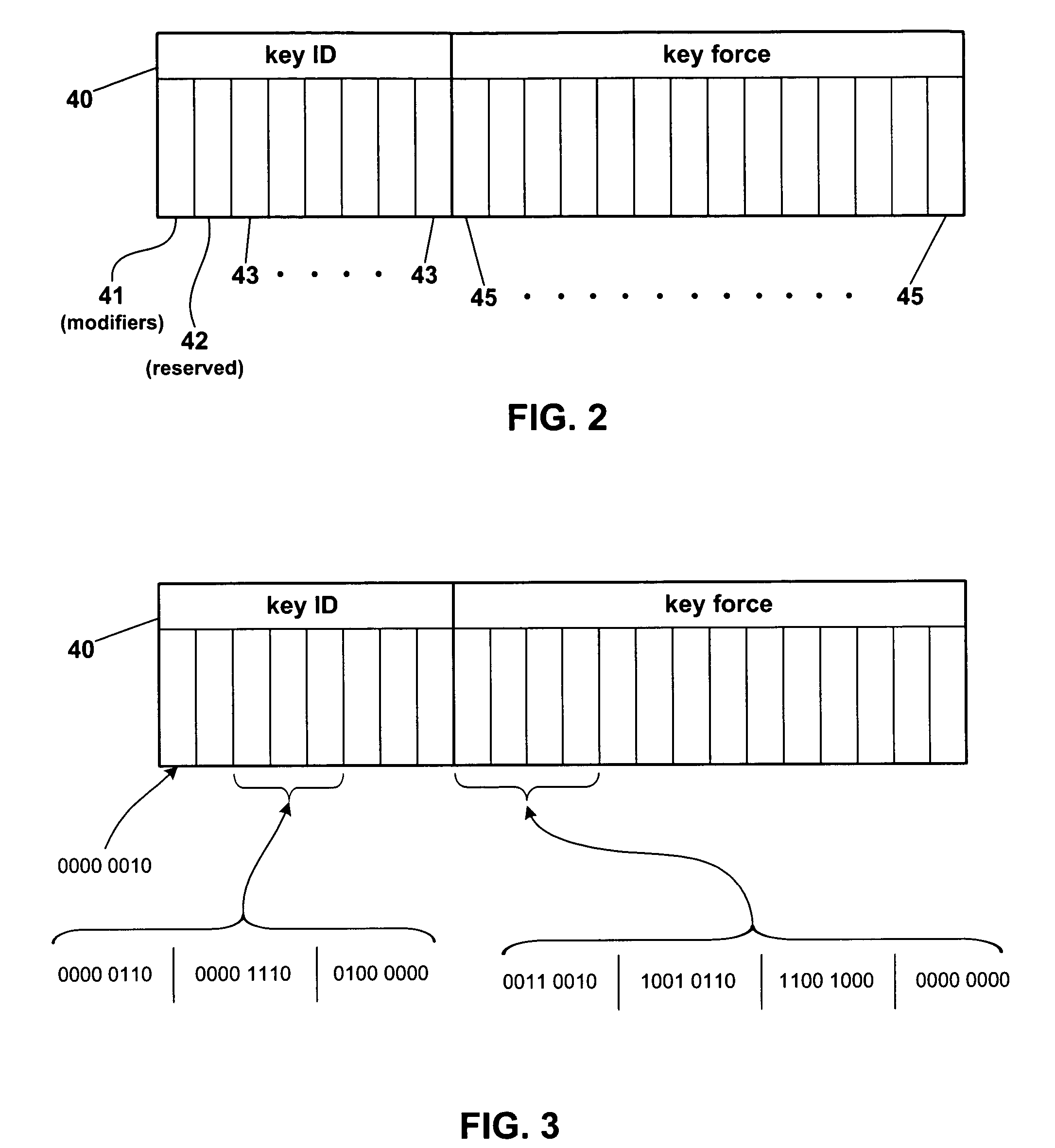Method for processing data quantifying force applied to one or more keys of a computer keyboard
- Summary
- Abstract
- Description
- Claims
- Application Information
AI Technical Summary
Benefits of technology
Problems solved by technology
Method used
Image
Examples
Embodiment Construction
The present invention is described using data structures, software architecture and other concepts of the type found in the WINDOWS® operating system software (available from Microsoft Corporation of Redmond, Wash.), and with reference to Human Interface Device (HID) reports generated in compliance with the Device Class Definition for Human Input Devices, the Universal Serial Bus (USB) Specification, the USB HID Usage Tables, Human Interface Device Profile v.1.0, and other related documents available from the USB Implementers Forum, Inc. at <http: / / www.usb.org>or from Bluetooth SIG, Inc. at <http: / / www.bluetooth.com>. However, the invention is not limited to such implementations, and may also be implemented in other software environments and using other data formats.
FIG. 1 is a block diagram showing various levels of driver and other software through which a force sensing keyboard 2 communicates with two application software programs 20 and 30. FIG. 1 generally reflects ...
PUM
 Login to view more
Login to view more Abstract
Description
Claims
Application Information
 Login to view more
Login to view more - R&D Engineer
- R&D Manager
- IP Professional
- Industry Leading Data Capabilities
- Powerful AI technology
- Patent DNA Extraction
Browse by: Latest US Patents, China's latest patents, Technical Efficacy Thesaurus, Application Domain, Technology Topic.
© 2024 PatSnap. All rights reserved.Legal|Privacy policy|Modern Slavery Act Transparency Statement|Sitemap



